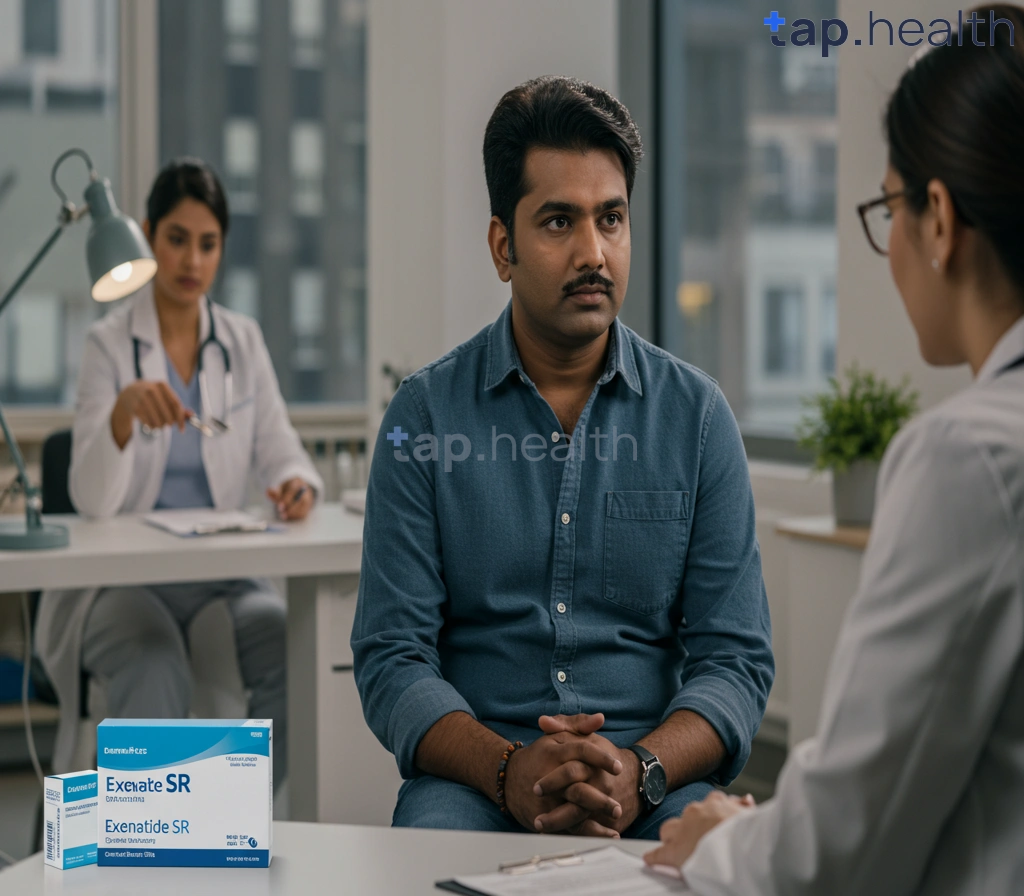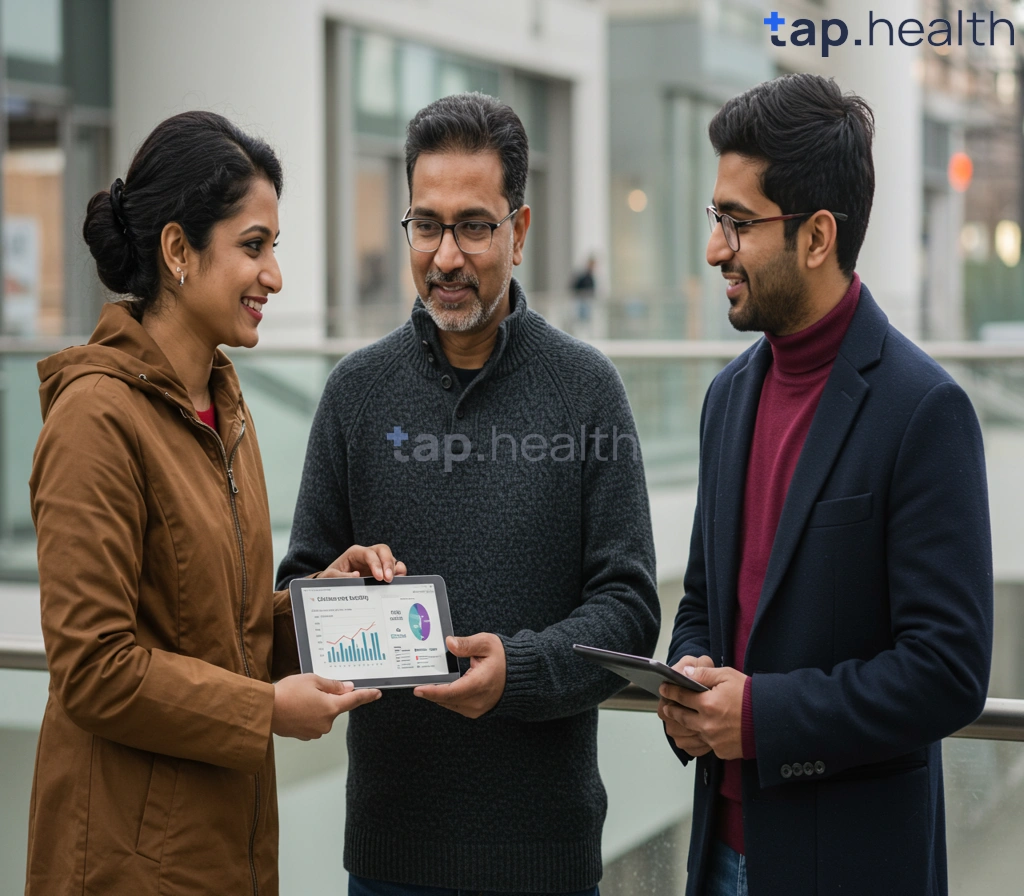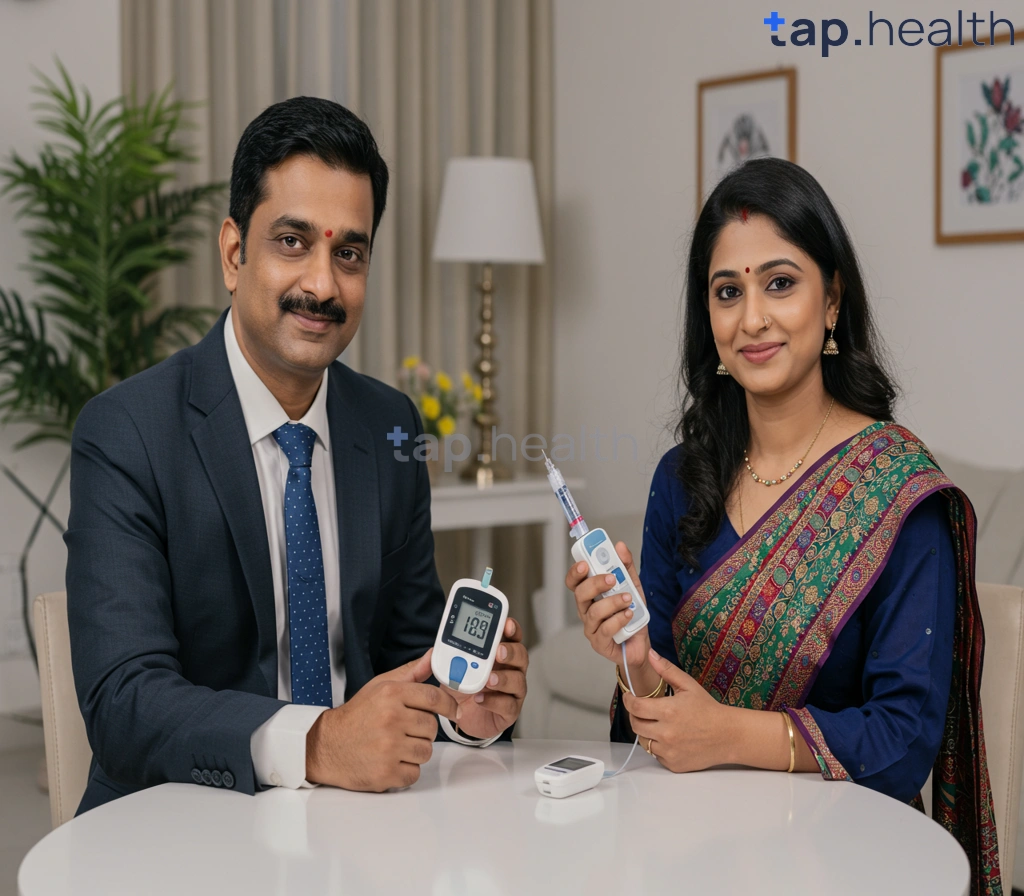Table of Contents
- Exenatide SR: Post-Kidney Transplant Diabetes Prevention
- Exenatide SR and Diabetes: Effectiveness After Kidney Transplant
- Is Exenatide SR Safe and Effective for Preventing Transplant Diabetes?
- Preventing Diabetes After Kidney Transplant: The Role of Exenatide SR
- A Guide to Exenatide SR: Managing Diabetes Risk After Kidney Transplant
- Frequently Asked Questions
- References
Receiving a kidney transplant is a life-altering event, offering a second chance at a healthier future. However, post-transplant diabetes can significantly impact long-term outcomes. This is where understanding medications like Exenatide SR becomes crucial. This blog post delves into the effectiveness and safety of Exenatide SR in preventing diabetes after kidney transplant, exploring the latest research and providing valuable insights for both patients and healthcare professionals. We’ll examine how this medication helps manage blood sugar levels and improve overall health post-transplant. Let’s explore the potential benefits of Exenatide SR: Preventing Diabetes After Kidney Transplant – Effectiveness and Safety.
Exenatide SR: Post-Kidney Transplant Diabetes Prevention
The risk of developing diabetes after a kidney transplant is significant, impacting patient outcomes and long-term health. This is particularly relevant in Indian and tropical countries where diabetes prevalence is already high. Nearly 30% of individuals with diabetes develop diabetic nephropathy, highlighting the crucial link between these conditions. Therefore, preventative strategies are paramount.
Exenatide SR’s Role in Preventing Post-Transplant Diabetes
Exenatide SR, a glucagon-like peptide-1 (GLP-1) receptor agonist, offers a potential solution. Its effectiveness lies in its ability to improve glucose control and potentially reduce the incidence of new-onset diabetes mellitus (NODAT) after transplantation. This is achieved through mechanisms like enhancing insulin secretion and suppressing glucagon release. By targeting these key elements of glucose metabolism, Exenatide SR can help maintain stable blood sugar levels, minimizing the long-term complications associated with post-transplant diabetes. Choosing the right diabetes medication is crucial, and you might find Which Diabetes Drug is Best for Diabetics with Kidney Disease? helpful in understanding your options.
Safety and Considerations in Tropical Climates
While Exenatide SR demonstrates significant promise, it’s crucial to consider its safety profile and potential interactions with other medications commonly used in post-transplant care. Furthermore, the impact of tropical climates and varying dietary habits on drug efficacy needs further investigation. Consult your nephrologist or transplant specialist to determine if Exenatide SR is a suitable preventative measure for you. They can assess your individual risk factors and create a personalized treatment plan.
Taking Action: Next Steps in Diabetes Prevention
For individuals in Indian and tropical countries undergoing kidney transplantation, proactive diabetes prevention is crucial. Discuss the potential benefits and risks of Exenatide SR with your healthcare provider to make informed decisions about your post-transplant care. Regular monitoring of blood glucose levels and adherence to a healthy lifestyle remain essential aspects of managing diabetes risk. Early intervention is key to improving long-term health outcomes following kidney transplantation. Remember to consider the role of dietary supplements, as detailed in Safe and Effective Dietary Supplements for Diabetes Care.
Exenatide SR and Diabetes: Effectiveness After Kidney Transplant
Understanding Post-Transplant Diabetes in India and Tropical Countries
Diabetes is a significant concern globally, particularly in India and other tropical countries. A substantial portion of the diabetic population falls within the working-age group (20-64 years) – 61% according to the IDF Diabetes Atlas – posing a considerable healthcare challenge. Kidney transplant recipients are at an increased risk of developing post-transplant diabetes mellitus (PTDM), further complicating their recovery and long-term health. This heightened risk makes exploring effective preventative strategies like Exenatide SR crucial in these regions.
Exenatide SR: A Promising Preventative Measure
Exenatide SR, a glucagon-like peptide-1 (GLP-1) receptor agonist, has shown promise in managing type 2 diabetes. Its potential application extends to preventing PTDM in kidney transplant patients. Studies are exploring its effectiveness in reducing the incidence and severity of post-transplant diabetes, particularly in populations with a high prevalence of diabetes like those found in India and other tropical nations. Further research is needed to specifically evaluate its efficacy and safety profile within these diverse populations, considering factors such as genetic predisposition and lifestyle influences. Managing diabetes effectively is crucial, and understanding the potential interactions between diabetes medications and other drugs, such as antidepressants like Lexapro, is important. For more information on this topic, please refer to our article on Does Lexapro Affect Diabetic Medicine? Impacts, Risks & Management Tips.
Actionable Steps and Considerations
For individuals facing kidney transplantation in India and tropical countries, discussing the potential benefits and risks of preventative medications like Exenatide SR with their transplant team is crucial. Early intervention and proactive management are key to improving long-term health outcomes. This includes lifestyle modifications such as adopting a healthy diet and regular exercise, crucial elements in diabetes prevention and management, regardless of medication. Open communication with healthcare providers is paramount for personalized care and informed decision-making. It’s also important to be aware of the potential complications of diabetes, such as Erectile Dysfunction, and to discuss any concerns with your doctor.
Is Exenatide SR Safe and Effective for Preventing Transplant Diabetes?
Post-transplant diabetes mellitus (PTDM) is a significant concern following kidney transplantation, impacting patient outcomes in Indian and tropical countries, where diabetes prevalence is already high. While the exact figures vary regionally, the global burden highlights the importance of preventative strategies. Consider that in the U.S., approximately 35 per 10,000 youths have diagnosed diabetes, a statistic illustrating the widespread nature of this condition. This underscores the need for effective preventative measures, particularly in populations with a higher predisposition to diabetes. Understanding the difference between types of diabetes is crucial; it’s important to note that diabetes cannot be transmitted, contrary to some misconceptions.
Exenatide SR and PTDM Prevention
Exenatide SR, a glucagon-like peptide-1 (GLP-1) receptor agonist, shows promise in preventing PTDM. Studies suggest its effectiveness in improving glucose control and reducing the incidence of new-onset diabetes after transplantation. However, its efficacy and safety profile in diverse populations, particularly those in tropical climates and with varying genetic predispositions, require further investigation. Factors such as lifestyle, dietary habits, and access to healthcare contribute to diabetes risk, and these must be considered when evaluating Exenatide SR’s potential. Dietary choices play a significant role; for example, consider the debate surrounding whether suji is good for diabetes.
Safety Considerations and Regional Factors
While generally well-tolerated, Exenatide SR can cause side effects like nausea and vomiting. These effects may be more pronounced in certain individuals or influenced by regional factors like diet and climate. Therefore, careful patient selection and monitoring are crucial. Furthermore, the cost-effectiveness of Exenatide SR needs to be evaluated in the context of healthcare systems in Indian and tropical countries.
Conclusion: A Call for Further Research and Regional Studies
The potential benefits of Exenatide SR in preventing PTDM are encouraging, but more research specific to Indian and tropical populations is needed to fully assess its safety and effectiveness. Further studies should consider the impact of environmental factors, genetic predispositions, and access to healthcare on treatment outcomes. This will help healthcare professionals make informed decisions about using Exenatide SR to prevent PTDM and improve the lives of kidney transplant recipients in these regions.
Preventing Diabetes After Kidney Transplant: The Role of Exenatide SR
Post-kidney transplant diabetes is a significant concern, especially in regions like India and other tropical countries where diabetes prevalence is high. The incidence of new-onset diabetes after transplantation (NODAT) can be substantial, impacting patient outcomes and increasing the burden on healthcare systems. A crucial factor to consider is that over 60% of people with diabetes in India also have hypertension, highlighting the complex interplay of comorbidities common in these populations. This underscores the need for effective preventative strategies.
Exenatide SR: A Promising Preventative Measure
Exenatide SR, a glucagon-like peptide-1 (GLP-1) receptor agonist, has emerged as a potential tool in preventing NODAT. Its mechanism of action, improving insulin secretion and reducing glucagon release, makes it a compelling candidate for this indication. Studies have shown its effectiveness in improving glucose control and potentially reducing the risk of developing diabetes after transplantation. The benefits of using Exenatide SR extend beyond simple glucose management; it can also positively impact cardiovascular health, a critical factor given the high prevalence of hypertension among diabetic individuals in India and similar regions. Understanding how diabetes affects blood flow is also crucial, as explained in our article, How Does Diabetes Affect Blood Flow?.
Considerations for Indian and Tropical Climates
While Exenatide SR shows promise, its application in tropical climates requires careful consideration. Factors such as heat sensitivity of the medication, potential interactions with other commonly prescribed drugs, and accessibility within diverse healthcare settings need to be addressed. Further research specific to these regions is crucial to optimize its use and ensure its equitable distribution. Consult your nephrologist or transplant team to determine if Exenatide SR is appropriate for your specific situation. Early intervention and personalized management strategies are key to successful diabetes prevention following kidney transplantation. Maintaining a strong immune system is also vital for overall health, especially when managing diabetes. For more information, read our blog on Boosting Immunity While Managing Diabetes.
A Guide to Exenatide SR: Managing Diabetes Risk After Kidney Transplant
Understanding the Challenges of Post-Transplant Diabetes
Kidney transplant recipients face a heightened risk of developing diabetes, significantly impacting their long-term health and survival. This risk is further exacerbated in individuals with pre-existing conditions like smoking. Research shows smokers with diabetes experience double the mortality rate due to cardiovascular complications. In tropical and Indian climates, where lifestyle factors can influence diabetes prevalence, managing post-transplant blood sugar becomes critically important. Exenatide SR emerges as a potential solution to mitigate these risks.
Exenatide SR: A Promising Therapeutic Approach
Exenatide SR, a glucagon-like peptide-1 (GLP-1) receptor agonist, offers a targeted approach to managing post-transplant diabetes. It works by stimulating insulin release only when blood glucose levels are elevated, reducing the risk of hypoglycemia, a common concern in transplant patients. Its effectiveness in improving glycemic control and reducing cardiovascular events makes it a valuable tool, especially in high-risk populations prevalent in India and other tropical regions. Choosing the right medication in consultation with your physician is crucial.
Practical Considerations for Indian and Tropical Countries
Access to healthcare and consistent medication adherence are essential factors influencing the success of Exenatide SR therapy. In many parts of India and tropical countries, navigating the healthcare system can pose challenges. It’s vital to discuss any concerns with your doctor and develop a plan that considers your specific circumstances and access to resources. Early detection and proactive management of diabetes after a kidney transplant are crucial for improving quality of life and longevity. Regular monitoring of blood glucose levels and maintaining a healthy lifestyle are essential components of effective diabetes management. Consult your physician to determine if Exenatide SR is the right choice for you. The challenges of managing diabetes can also increase with age, as discussed in our article on Managing Diabetes as You Age: Challenges and Solutions. For those who travel frequently, Traveling with Diabetes: Essential Tips for a Safe & Healthy Journey offers helpful advice.
Frequently Asked Questions on Preventing Diabetes After Kidney Transplant
Q1. What is Post-transplant Diabetes Mellitus (PTDM), and why is it a concern after kidney transplant?
Post-transplant Diabetes Mellitus (PTDM) is the development of diabetes after a kidney transplant. It’s a significant concern, particularly in regions like India with high diabetes prevalence, because it can negatively impact the success and longevity of the transplant and overall patient health.
Q2. How can Exenatide SR help prevent PTDM?
Exenatide SR is a medication that helps improve glucose control and reduces the risk of developing diabetes after a kidney transplant. It works by enhancing insulin secretion and suppressing glucagon release, thereby improving blood sugar levels.
Q3. What are the benefits of using Exenatide SR to prevent PTDM?
Using Exenatide SR may help prevent or delay the onset of diabetes after a kidney transplant, leading to better long-term health outcomes for transplant recipients. It offers a proactive approach to managing a significant post-transplant risk.
Q4. Are there any potential risks or limitations associated with Exenatide SR?
While promising, more research is needed to fully understand the safety and effectiveness of Exenatide SR in diverse populations and various clinical situations. It’s crucial to discuss potential side effects and interactions with other medications with your doctor.
Q5. How do I know if Exenatide SR is right for me, and what steps should I take?
Whether Exenatide SR is suitable for you depends on your individual health status and transplant situation. It’s essential to consult with a nephrologist or transplant specialist to determine its appropriateness. They will consider your medical history, lifestyle, and other factors to make the best recommendation. Lifestyle modifications and regular monitoring are also vital.
References
- A Practical Guide to Integrated Type 2 Diabetes Care: https://www.hse.ie/eng/services/list/2/primarycare/east-coast-diabetes-service/management-of-type-2-diabetes/diabetes-and-pregnancy/icgp-guide-to-integrated-type-2.pdf
- Electronic Health Records-Based Data-Driven Diabetes Knowledge Unveiling and Risk Prognosis : https://arxiv.org/pdf/2412.03961
Meta Data
Meta Title: Exenatide SR & Diabetes Prevention After Kidney Transplant | Effectiveness and Safety
Meta Description: Discover the effectiveness and safety of Exenatide SR in preventing diabetes after a kidney transplant. Learn about its benefits, potential risks, and how it can improve your post-transplant health. Consult your doctor today!
alt_text: Exenatide SR effects on diabetes after kidney transplant
url_slug: exenatide-sr-diabetes-prevention





